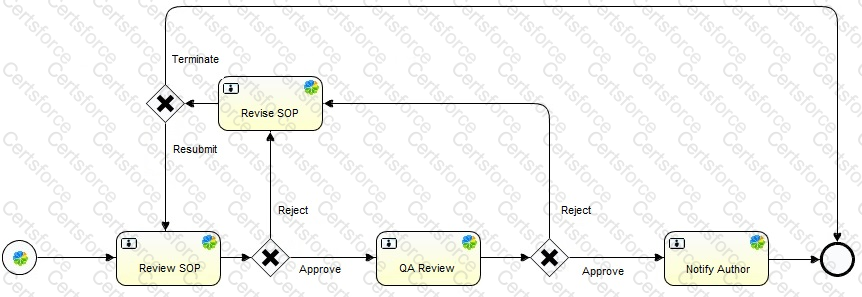Which FreeMarker expression would be used to access the presentation template that is being applied to a node?
When defining Smart Folder Templates which are considered best practices? (Choose two.)
What is the primary use of content rules?
During the development stage of a workflow, developers need to make sure the newest version of the process definition is being deployed, as there may be significant structural changes to the workflow. Choose the correct development cycle that allows the deployment of the newest version correctly.
You have been tasked to develop a solution that will notify an external system when updates are made to certain documents. These documents can be of any type and the content authors will make the decision if the document needs this “notification” functionality. Select the simplest combination steps that will implement this solution.
The embedded Activity in Alfresco Content Services provides different types of tasks in a process definition. Which one is NOT a provided task?
In the workload pictured, which sequence flows will be taken after the QA Review is complete?

Which of the following URLs are a valid base for accessing the Alfresco 5.2 Rest API for an Alfresco repository accessible via the URL http://server/alfresco? (Choose two.)
Which Alfresco Java Public API service allows reading and writing node properties?
Which of the following is not an Alfresco-supplied subsystem category?